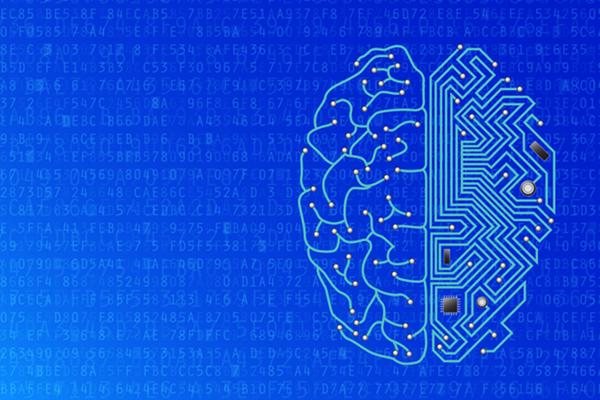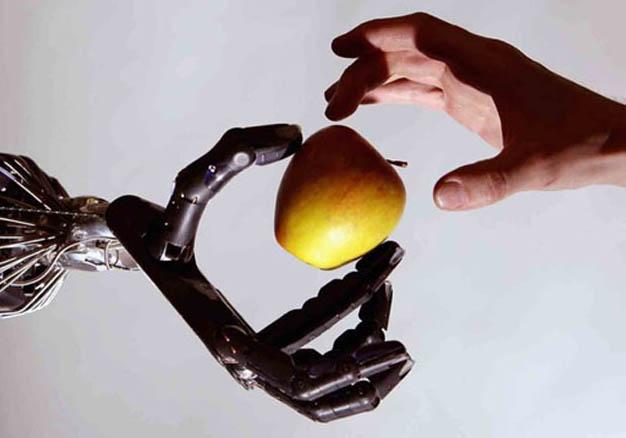You are here
IBM makes a big shift into cognitive computing through its Almaden lab
By Los Angeles Times (TNS) - May 04,2016 - Last updated at May 04,2016

Photo courtesy of cio.com
ALMADEN, California — IBM’s California research lab sits atop a green hill here, 24 kilometres south of downtown San Jose.
There are not any signs that suggest if you drive up the narrow road that wraps around the hill you’ll find a research facility at the top. No signs that the research centre is home to a Fortune 500 company. No signs — even inside — that the company once dominated the personal computer industry.
After decades in the spotlight as a hardware-centric firm selling PCs, servers and mainframes, the 105-year-old tech giant has made a dramatic shift into a realm that few understand: cognitive computing. Deep within the apps we use, the food we eat, the medicine we take and the medical diagnoses we make, you’ll find traces of IBM.
Like its Almaden research lab, there are no obvious signs it’s there. Look carefully, though, and the work of IBM — particularly from its Almaden lab — is everywhere.
IBM’s cognitive computing business — which includes artificial intelligence, machine learning, algorithms and analytics — accounted for 35 per cent of the company’s $81 billion in revenue last year. It’s the fastest-growing segment at IBM, where overall sales are declining. Jeffrey Welser, the director of Almaden Research Centre of IBM, said it’s “the main focus for IBM in terms of growth”.
The work at Almaden played no small part in this.
Several hundred researchers work at the facility developing artificial intelligence, algorithms and the chip sets to support faster, more powerful self-learning systems. It feels less like other Silicon Valley tech campuses, where hoverboards and ping-pong tables are common sights, and more like a college campus without the students. The hallways are quiet and clean. The tenured professors — in this case, the IBM scientists and engineers — code away in their discreet offices.
IBM is still a major player in servers and mainframes — its technology continues to power banking and airline reservation systems. It also has people working in areas such as cybersecurity and the cloud. But to understand why it sees cognitive computing as its future, it helps to go back to 2011, when IBM’s artificial intelligence, Watson, beat human players on the game show “Jeopardy”.
Winning “Jeopardy” isn’t like winning at chess. An earlier IBM artificial intelligence, Deep Blue, beat the world chess champion in 1995 by computing every possible move and picking the best option. But for Watson to even play “Jeopardy”, it had to learn natural language, understand riddles and answer questions in coherent sentences. Stuff humans do.
IBM had been researching artificial intelligence since the 1970s. But the Watson victory was a major breakthrough: If IBM could teach Watson everything it needed to know to win a complex game show, what else could it be taught?
“Part of it is showing that a computer can do things beyond crunching numbers,” Welser said. “The human mind cannot crunch numbers very well, but it does other things well, like playing games, strategy, understanding riddles and natural language, and recognising faces. So we looked at how we could get computers to do that.”
Shortly after the “Jeopardy” matches, IBM researchers, including those from its Almaden lab, taught Watson to read patent databases and medical journal abstracts. In drug research, any given molecule can have as many as 100 synonyms—brand names, generic names, different chemical strings. They taught Watson how to identify those. They also taught it context.
“If it reads the word ‘sleepy’ in a document, it has to understand whether sleepiness is the cause, effect, side effect, or if it’s what the drug is trying to stop or achieve,” Welser said.
That feature, which is part of the Watson Discovery Advisor, is now used by researchers in the pharmaceutical industry.
That’s not all that Watson has been taught.
The cognitive power that goes into Watson has also given IBM a seat at the food safety and genomic research table.
The company partnered with Mars Inc. last year to create a consortium that, in a bid to improve food safety, studies the fingerprints of bacteria, fungi and viruses and how they grow in different environments. Much of that research is being pioneered at Almaden.
IBM has partnered with the Memorial Sloan Kettering Cancer Centre to enable medical researchers to use Watson to get detailed diagnostics and treatment options based on the latest cancer research.
In radiology, Watson can go through thousands of images to help doctors find MRI scans that are relevant to a diagnosis.
Watson can even be found in recruitment and marketing tools, and dating apps. The artificial intelligence can trawl through social media accounts, analyse the language people use and determine their personality traits.
To test its efficacy — and just for fun — researchers at Almaden have fed Watson scripts from the “Star Wars” movies to see if it can figure out the personality traits of characters. On the neuroticism scale, C-3PO ranks high, while Jedis tend to rank low. On the anxiety scale, C-3PO also comes in on top. When it comes to assertiveness, Yoda outranks everyone.
“It’s about understanding people better at a deeper level,” said Rama Akkiraju, an engineer at Almaden who works with the Watson group. “So if I’m trying to sell you something, I could know ahead of time what kinds of things you’re interested in, and I’d only offer you the things relevant to you.”
Not bad for a computer. Except Watson isn’t technically a computer, it’s software. It helps to think of Watson as a collection of algorithms stored in the cloud that can do different things. They can be mixed and matched to solve a problem — like an army, in which every soldier has a different skill.
It’s in these armies of algorithms, powered by faster and more efficient chips, that IBM believes its future lies.
The move has not been completely painless, though. IBM has spent the last decade going through job cuts and revenue dips. Today, it employs 377,000 people around the world, down from nearly 450,000 in 2011. In April it reported a sales drop for the 16th consecutive quarter to $18.7 billion.
In an interview with Bloomberg, IBM’s chief financial officer, Martin Schroeter, said its cognitive solutions business will have “a fair bit of ramp in order to make them sizeable and start to punch above their weight in terms of overall growth rate”.
IBM also faces increasing competition in the cognitive computing space. Google, Apple and Facebook have all invested in artificial intelligence, with algorithms assisting users with search, image and face recognition, and voice recognition (Hello, Siri!).
Even smaller start-ups making photo and music apps are teaching their algorithms to recognise images and songs, and learn from people’s usage habits.
But just like IBM saved companies from having to build their own computers and servers, it’s now hoping it can turn a profit saving companies, scientists and researchers from building their own cognitive solutions. Need help with data crunching? Genomic sequencing? Personality matching? There’s a Watson for that.
And it’s quite content to stay in the background this time, being the invisible backbone for consumer-facing companies. Like its Almaden lab, its contributions are hard to spot. Look carefully, though, and you’ll find it everywhere.
Related Articles
WASHINGTON — Your next doctor could very well be a bot.
Watson already has won a major TV game show, is looking for a cure for cancer and has ambitious gastronomy ambitions including devising a recipe for chocolate-beef burritos.
SAN FRANCISCO — When users ask Siri, Apple’s digital assistant, what she likes to drink, she is quick with an answer.“I have a thirst
















